AWS Certified AI Practitioner
Applications of Foundation Models
Selecting Pre Trained Models
Welcome to this lesson on selecting pre-trained models for your machine learning and AI applications. Pre-trained models offer a robust starting point that can save both time and computational resources compared to developing models from scratch. In this guide, we will explore key factors including cost, customization, performance, bias, explainability, and hardware constraints.
Why Choose Pre-Trained Models?
Building a model from the ground up is often expensive and resource-intensive. Pre-trained models provide a proven foundation that you can fine-tune for task-specific datasets, accelerating your deployment process and reducing costs.
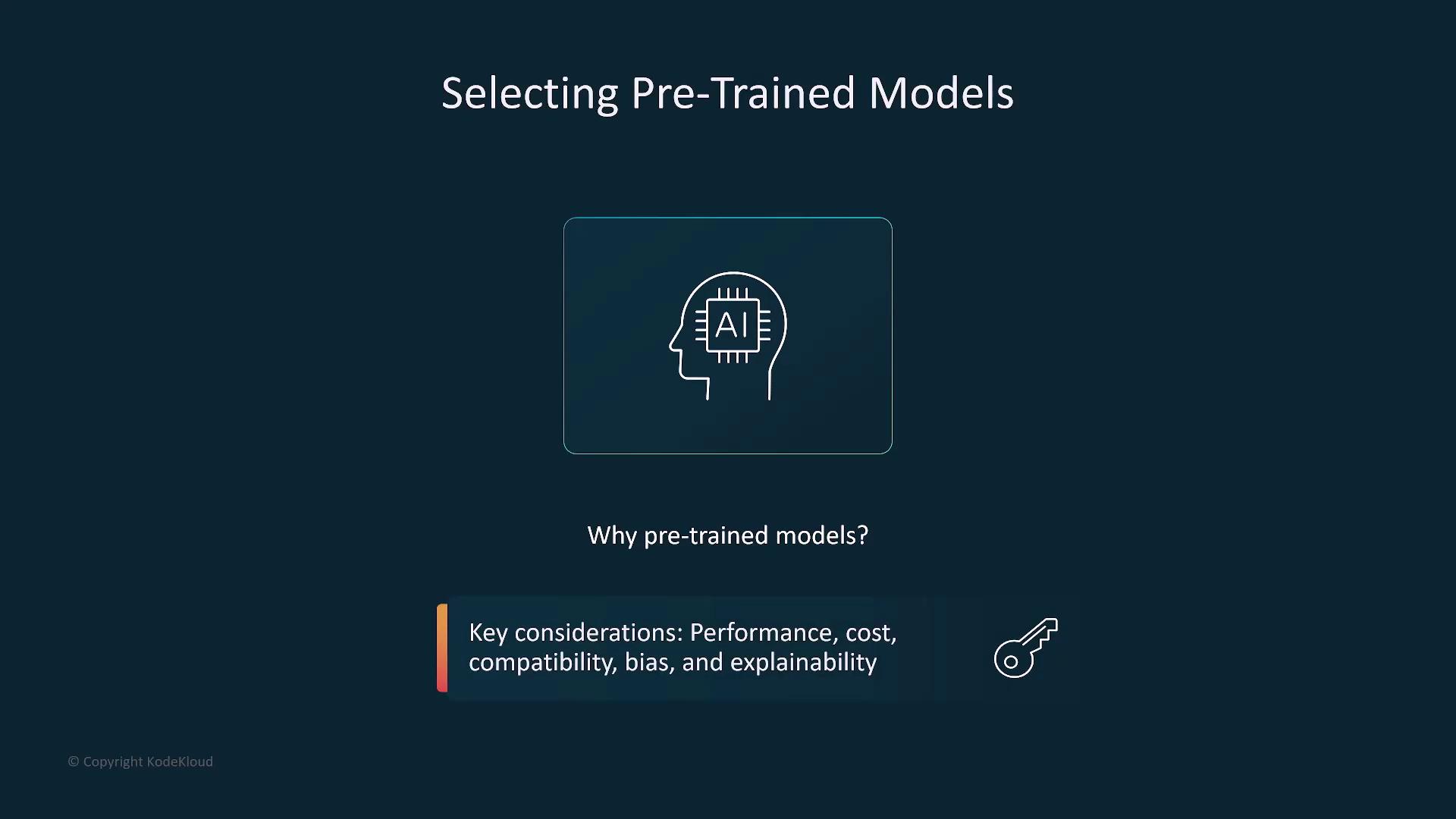
Addressing Bias and Ethical AI
Reducing bias and ensuring ethical AI practices are critical when selecting pre-trained models. Techniques such as data augmentation or resampling can help introduce more diverse samples into underrepresented datasets. It is also essential to uphold transparency and accountability in model usage and outcomes.
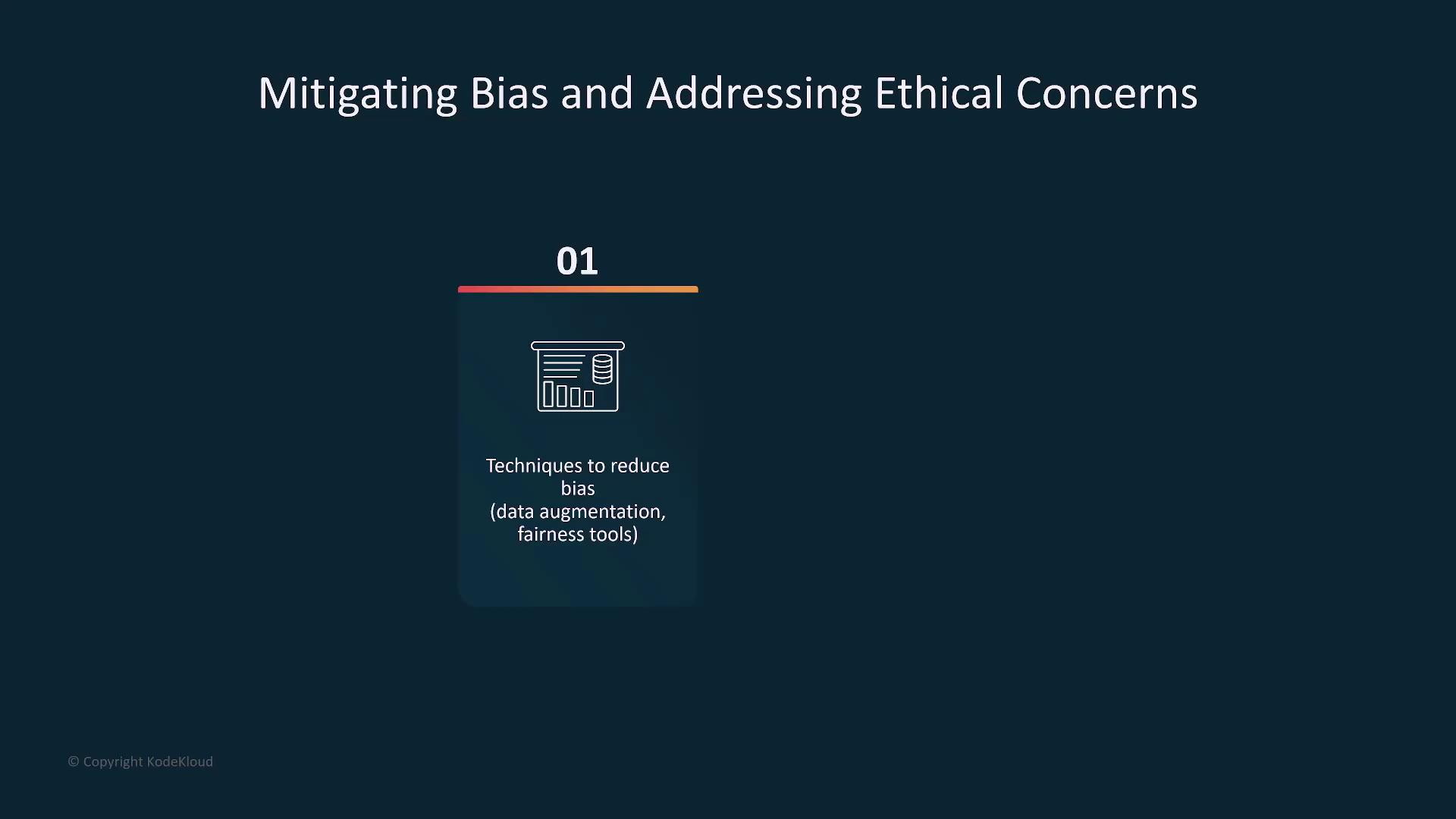
Evaluating Availability and Compatibility
Before integrating a pre-trained model into your solutions, evaluate its availability and compatibility. Many models are hosted on repositories such as Hugging Face, PyTorch Hub, and TensorFlow Hub. Ensure your chosen model is compatible with your framework, development environment, and any integration tools such as LangChain. Always verify that the model is well maintained and regularly updated to avoid issues like bugs or performance limitations.
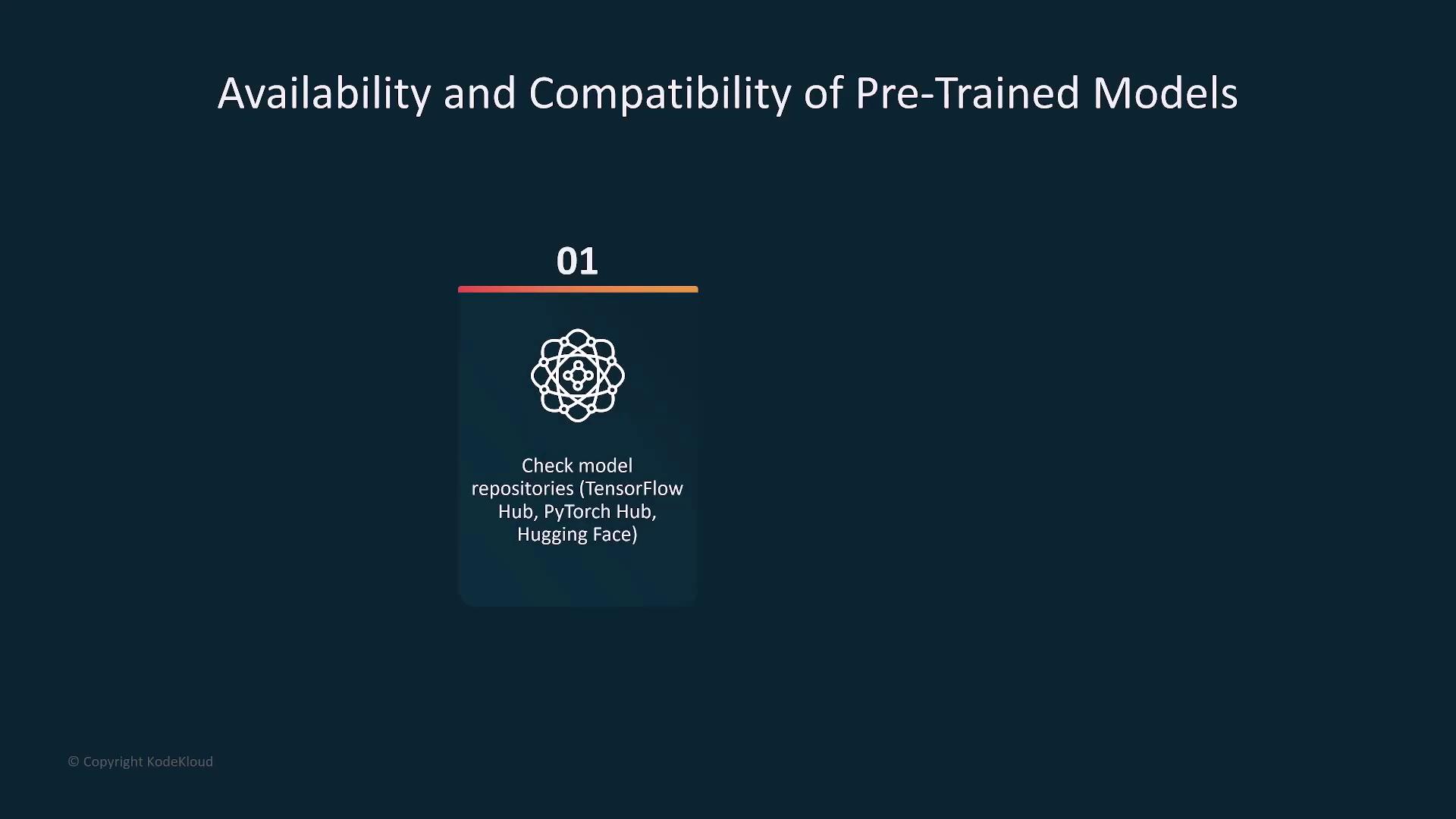
Model Maintenance and Updates
Active maintenance and timely updates are key to ensuring long-term performance and reliability. Research whether the model is actively supported and review any known limitations before adoption.
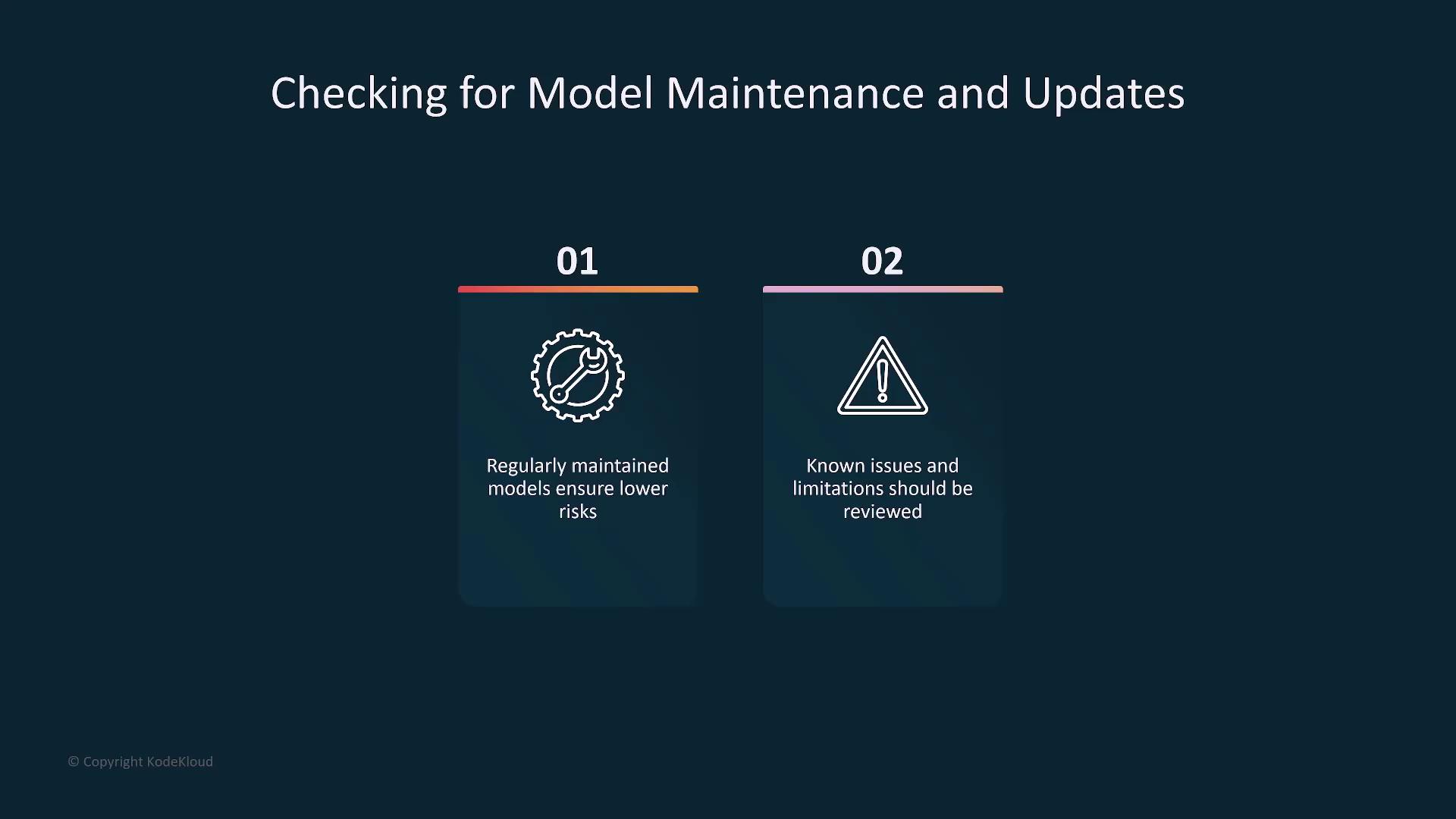
Customization and Fine-Tuning
Customization is vital when adapting a pre-trained model to your specific needs. Evaluate if you can fine-tune the model by adding layers, classes, or features or if extensive retraining is required. Determine which adjustments—such as incorporating more context or employing retrieval-augmented generation (RAG)—are necessary to optimize your solution.
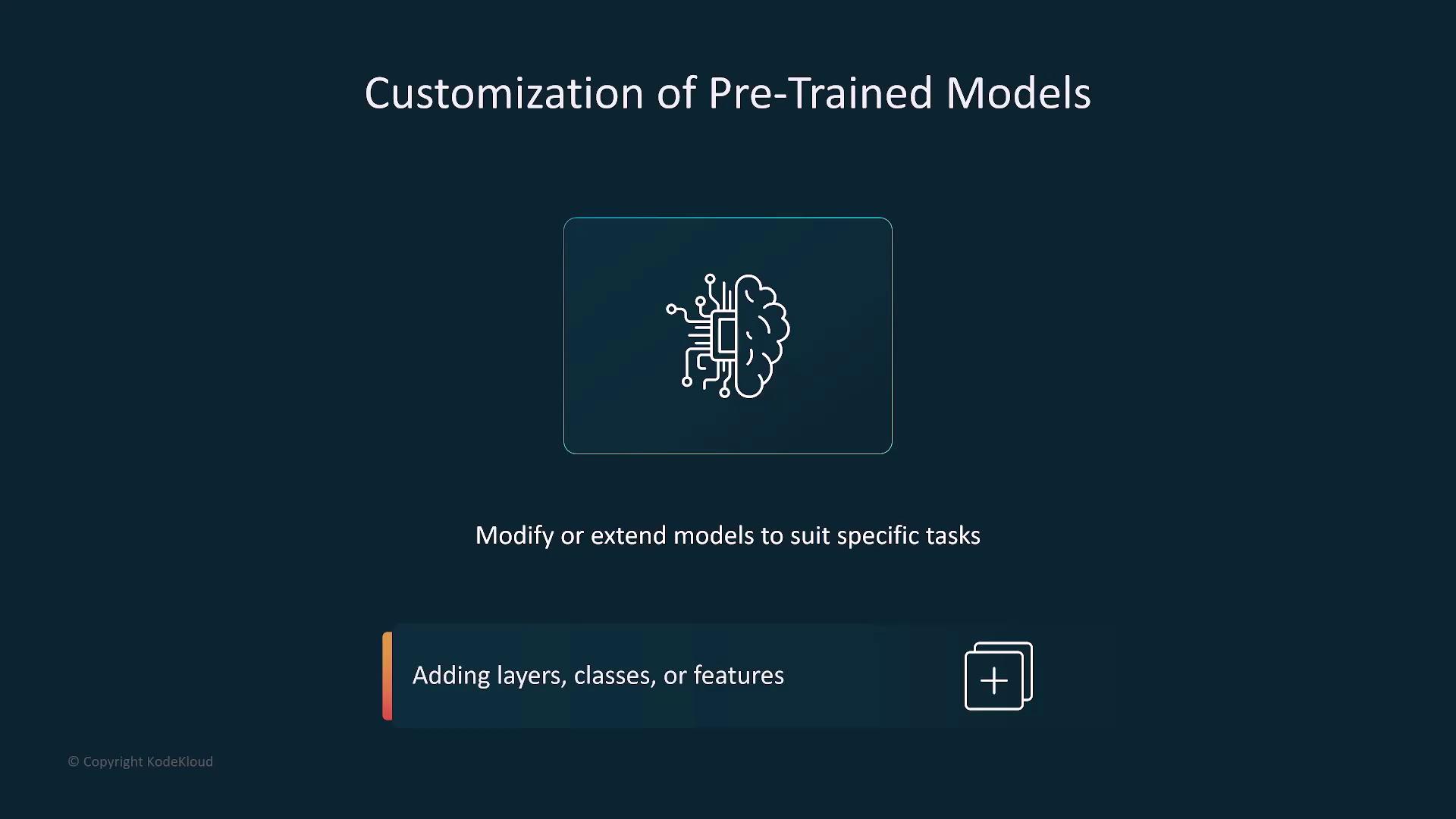
Transparency: Interpretability vs. Explainability
Transparency in a model’s operations is crucial, particularly in sensitive sectors like healthcare, legal, or finance. There are two concepts to consider:
- Interpretability: Direct revelation of a model’s internal decision-making, applicable to simpler models like linear regression or decision trees.
- Explainability: Utilizes techniques such as LIME (Local Interpretable Model-Agnostic Explanations) and SHAP (Shapley Additive Explanations) to approximate a complex model's reasoning process.
Note
For applications requiring complete transparency, choose interpretable models. However, for complex models, invest in explainability techniques to offer insights into how decisions are made.

Understand how your model reaches a prediction. For instance, SageMaker Clarify provides built-in insights into model predictions, safeguarding the need for explainability. Even though tools like LIME and SHAP do not fully reveal the inner workings, they are invaluable in understanding model behavior.

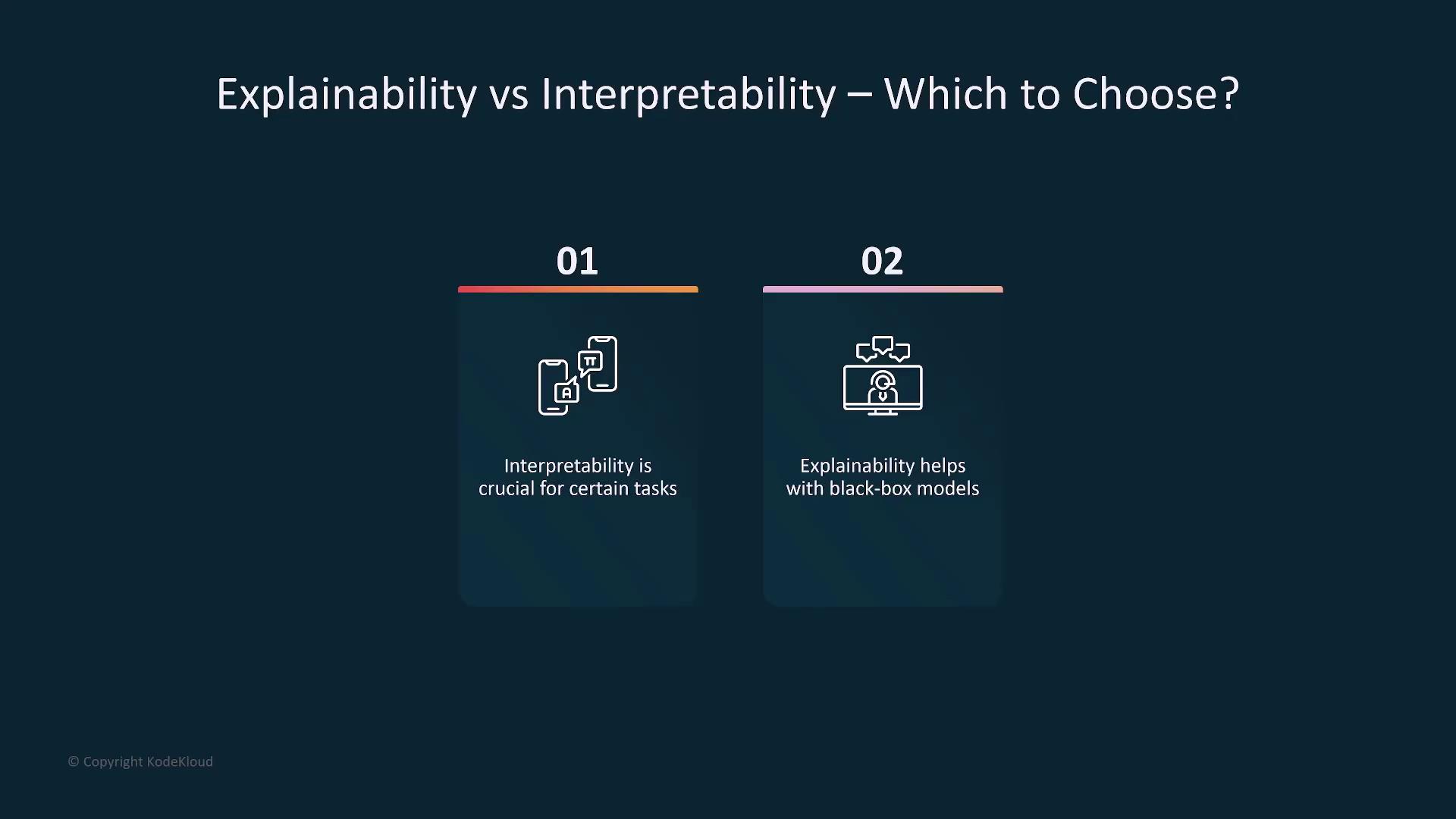
Hardware Constraints and Cost Considerations
Your selected model must align with your hardware capabilities. Ensure you have the necessary computational resources—such as GPUs or TPUs—for both training and inference. Additionally, keep in mind the overall costs associated with maintenance and operation.
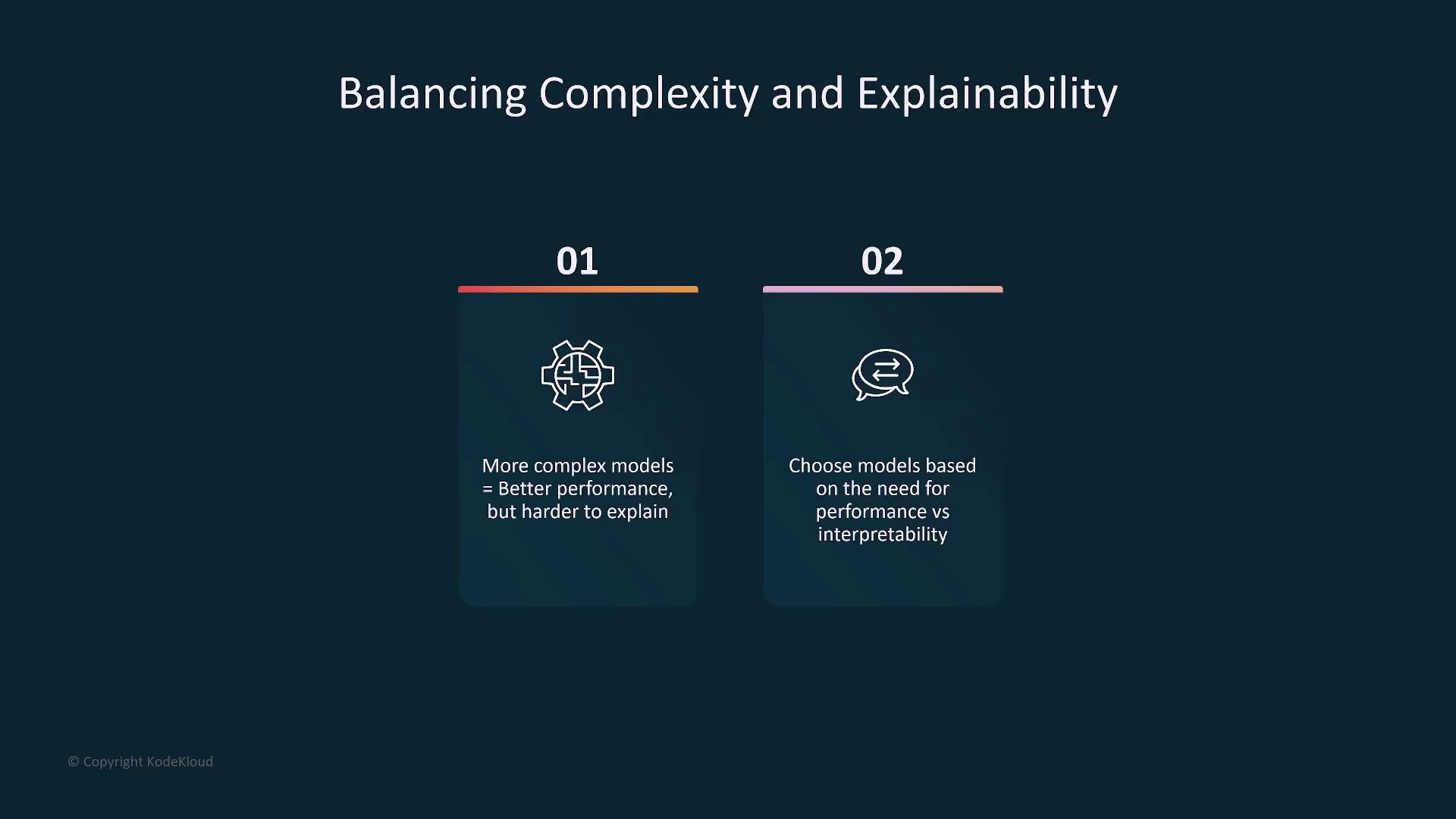
Data Privacy and Security
Preserving data privacy is essential, especially when handling sensitive information like health or financial data. Techniques such as federated learning can be incorporated to train models across decentralized devices, ensuring privacy is maintained without compromising performance.
Warning
Before deploying any model, verify that all data privacy and security standards are met to avoid future compliance issues.

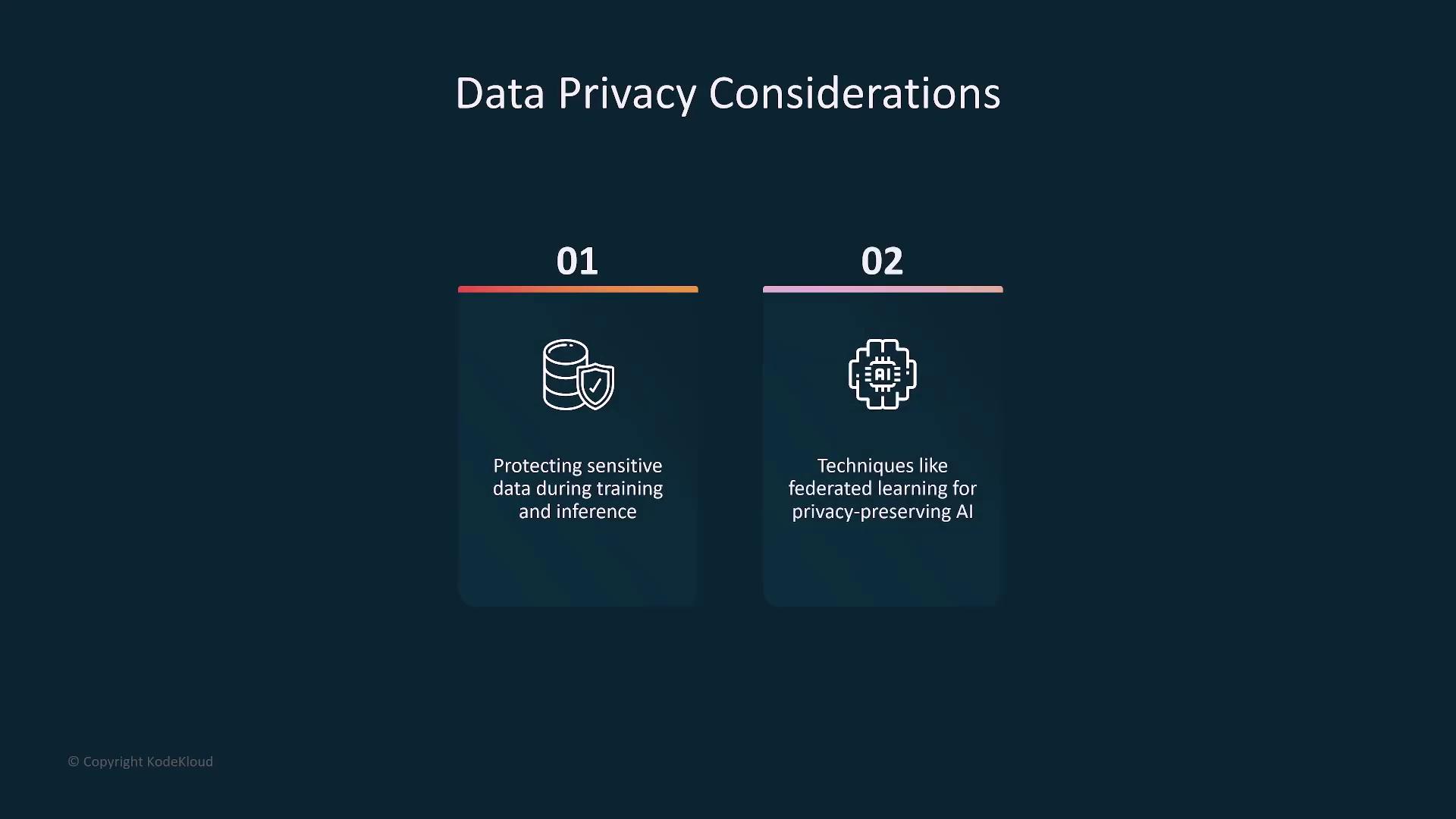
Transfer Learning
One of the significant advantages of pre-trained models is the ability to leverage transfer learning. By fine-tuning a model that has been pre-trained on a large dataset, you can efficiently adapt it to a smaller, task-specific dataset. This not only reduces training time but also minimizes the need for vast datasets and extensive computational resources.
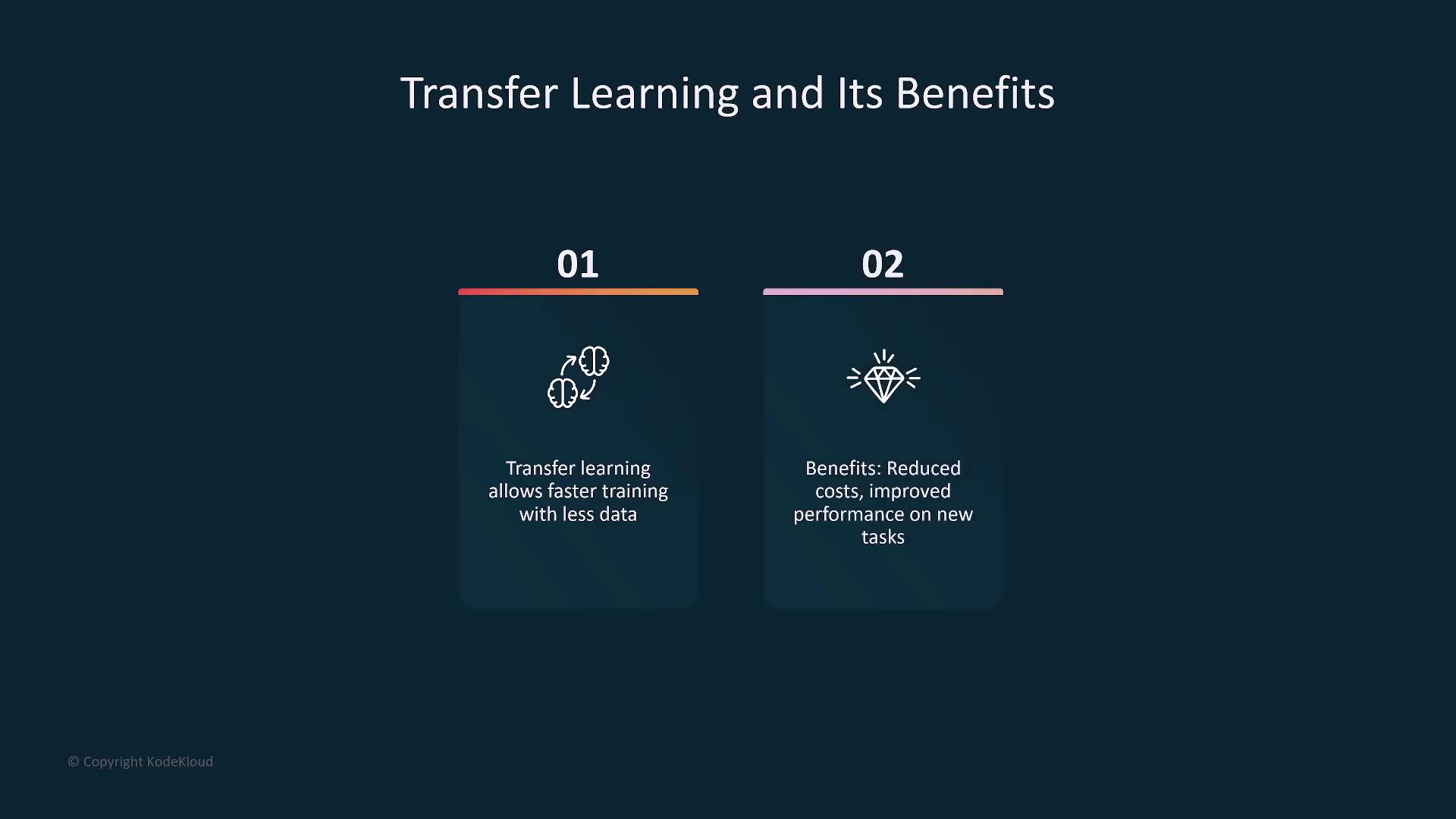
Summary of Key Considerations
When selecting a pre-trained or foundational model, consider the following factors:
| Consideration | Key Points |
|---|---|
| Bias and Fairness | Implement techniques like data augmentation, ensure diverse data representation. |
| Compatibility | Verify framework, hardware support, and repository maintenance (e.g., Hugging Face, TensorFlow Hub). |
| Interpretability | Required for simpler models needing complete transparency. |
| Explainability | Essential for complex models where insights into decisions are needed via tools like LIME and SHAP. |
| Hardware and Cost | Assess computational resource requirements (GPUs/TPUs) and ongoing maintenance costs. |
| Customization | Determine if fine-tuning is feasible or if extensive retraining is needed. |
| Data Privacy | Incorporate privacy-preserving techniques such as federated learning. |
| Transfer Learning | Utilize pre-trained models to save time by fine-tuning on smaller, specific datasets. |
Each factor plays a crucial role in selecting the most appropriate pre-trained model for your application.
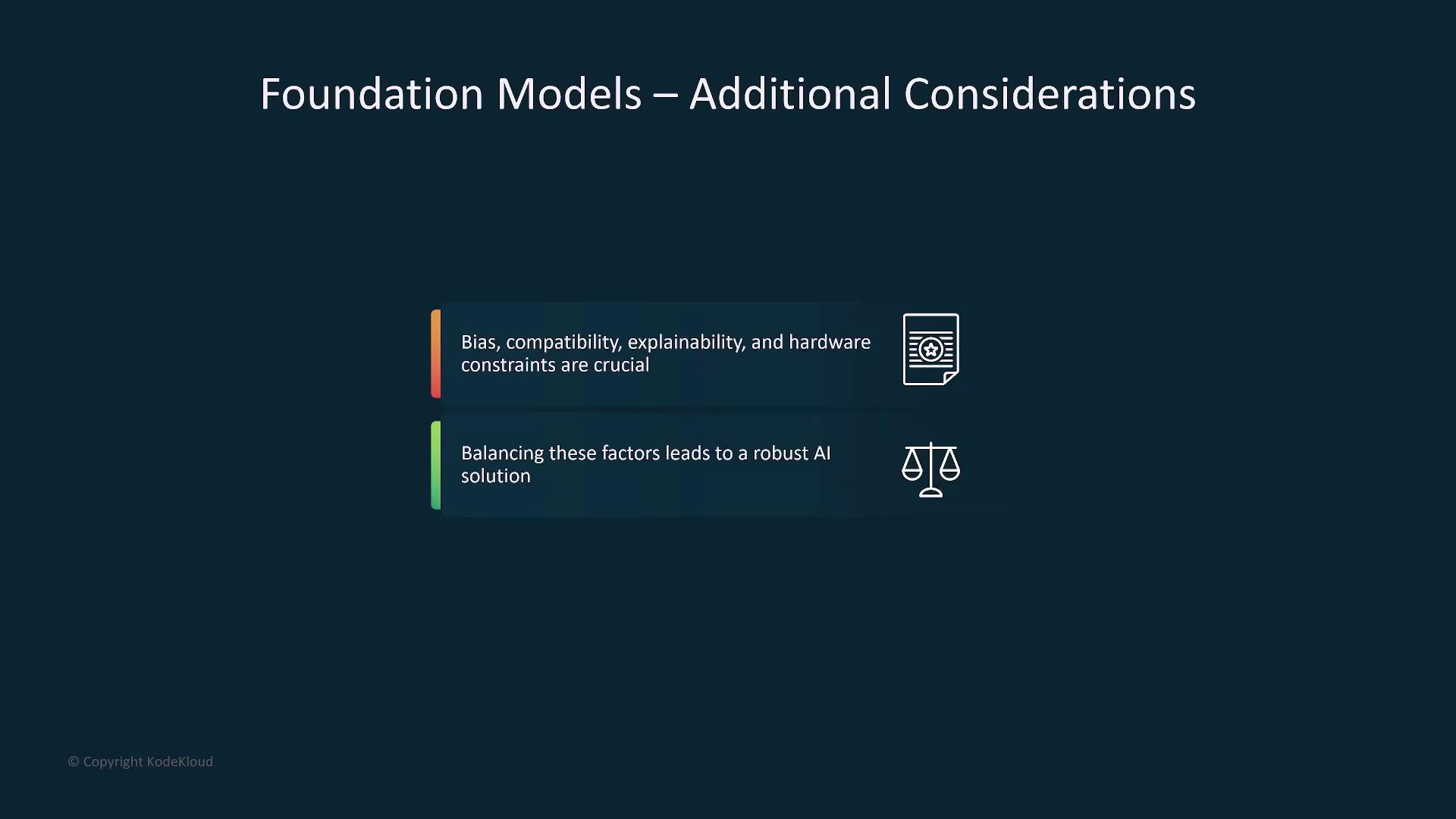
Thank you for following along in this lesson. We look forward to exploring more topics in our next article.
Watch Video
Watch video content